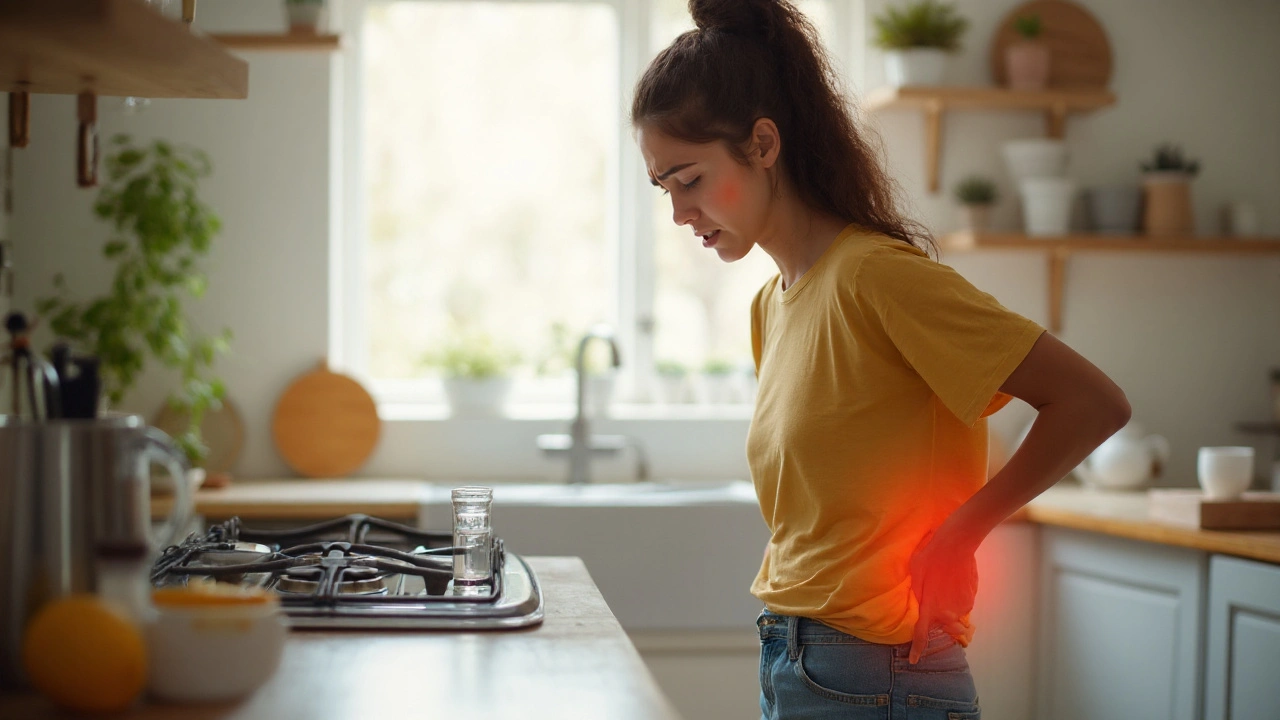Cystitis: Signs, Causes, and Simple Relief
If you've ever felt a burning urge to pee or a constant pressure in your lower belly, you might be dealing with cystitis. It's the medical term for a bladder infection, and it pops up more often than you'd think—especially in women. The good news? Most cases are easy to treat, and there are practical steps you can take right at home to feel better fast.
Why does cystitis happen? Usually bacteria from the gut or the skin travel up the urethra and settle in the bladder. Things that make that route easier include holding urine too long, not wiping front‑to‑back after using the bathroom, and certain types of birth control. Even a new sexual partner can stir things up. Knowing the triggers helps you cut them out before they cause another flare‑up.
Common Symptoms to Watch For
The hallmark sign is a painful, urgent need to urinate, often with only a little urine coming out. You might also notice cloudy or strong‑smelling urine, a dull pain in the lower abdomen, or a low‑grade fever. Some people feel a vague pressure that feels like they need to go, even when the bladder is empty. If you see blood in your urine (a pink or reddish tint), that's another red flag that the bladder lining is irritated.
These symptoms can be mild at first, making you think it's just a minor irritation. But if they stick around for more than a day or two, it’s time to act. Ignoring cystitis can let the infection travel to the kidneys, which is a lot more serious and needs stronger treatment.
Treatment: When to See a Doctor and Home Options
Most mild cystitis cases clear up with a short course of antibiotics prescribed by a doctor. The key is to start treatment early—so call your healthcare provider as soon as you notice the classic symptoms. They’ll likely ask about your medical history and may run a urine test to confirm the infection and pick the right medication.
While you wait for your prescription, a few home tricks can ease discomfort. Drink plenty of water (aim for at least 8 glasses a day) to flush bacteria out. Cranberry juice without added sugar is a popular aid, though the evidence is mixed; it may help prevent bacteria from sticking to the bladder wall. Avoid caffeine, alcohol, and spicy foods, as they can irritate the bladder further.
Over‑the‑counter pain relievers like ibuprofen or acetaminophen can dull the burning sensation. A warm heating pad on your lower abdomen can also relieve cramp‑like pain. If you’re prone to cystitis, try to urinate soon after sex and never hold it when you feel the urge.
Most people feel better within a couple of days of starting antibiotics, but finish the full course even if symptoms vanish. Stopping early can let the bacteria bounce back, creating a resistant infection.
Preventing future episodes is all about habits. Keep the genital area clean and dry, stay hydrated, and consider probiotic‑rich foods to support healthy urinary flora. If you have a history of frequent cystitis, talk to your doctor about low‑dose antibiotics taken after sex or a daily supplement that may lower your risk.
Bottom line: cystitis can be uncomfortable, but it’s usually straightforward to treat. Spot the symptoms early, get proper antibiotics, and use simple home measures to stay comfortable while your body clears the infection. With the right habits, you can keep bladder infections at bay and get back to feeling normal again.
How Cystitis Can Lead to a Kidney Infection (Pyelonephritis)
Explore how a simple bladder infection (cystitis) can progress to a serious kidney infection, the signs to watch for, and steps to prevent complications.
Read more